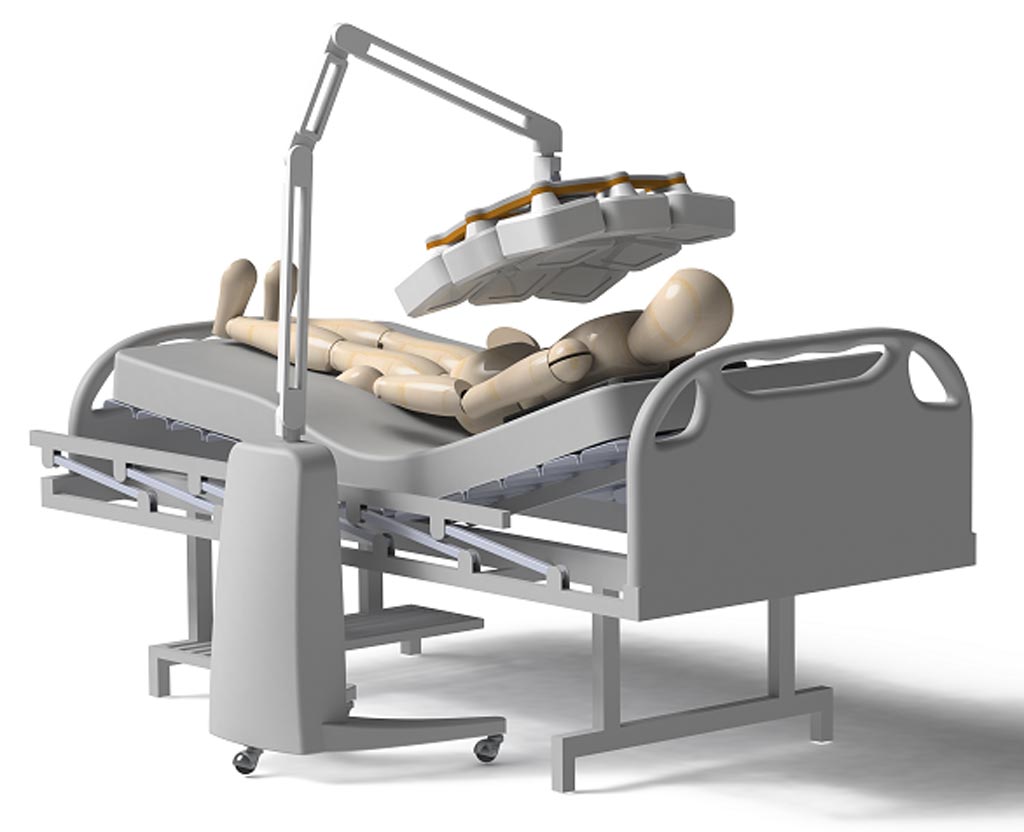Space Exploration Technology Provides Bedside Imaging Capabilities
By MedImaging International staff writers
Posted on 25 Apr 2019
A new flat-panel source (FPS) makes portable, low-dose, and low-cost three-dimensional (3D) digital tomosynthesis (DT) more accessible.Posted on 25 Apr 2019
The Adaptix (Begbroke, United Kingdom) FPS is composed of an array of cold cathode field emitters fitted into a sealed unit; each field emitter generates a conelet of X-rays, while a proprietary system, designed to avoid the common problem of high-voltage switching, allows for each X-ray emission to be addressed and individually controlled, thus eliminating large numbers of overlapping X-rays. An additional benefit of the flat panel design is that it can cover many different angles, allowing depth information to be derived through DT.

Image: Flat panel technology developed for space exploration can assist DT (Photo courtesy of Adaptix).
The multi-angle imaging is possible without the need to physically move the emitting source, which reduces acquisition time and therefore the risk of motion artifacts. A reduced standoff distance results in reduced power requirements and thermal challenges, compared to conventional X-ray sources, and a further benefit is that beam focal spots are in the sub-millimeter range, providing enhanced resolution. A proprietary image reconstruction solution, developed in conjunction with the University of Oxford (United Kingdom), uses sparse data techniques to optimize image reconstruction.
“Being incubated at the world-renowned Rutherford Appleton Laboratory in Oxfordshire's Harwell Campus has given us access to fantastic facilities and leading minds to support the development of our space-heritage technology,” said Mark Evans, CEO of Adaptix. “X-ray is the primary diagnostic in healthcare; one day we hope that Adaptix technology will touch the lives of everyone that you know. Our vision is to create a business that will transform radiology.”
“The scanner relies on technology developed for space; including field emitters etched onto silicon wafers used previously in ion thrusters, and X-ray optics deployed on star mapping spacecraft such as the European Space Agency's XMM Newton mission, in which the UK played a major role,” said UK Science Minister Chris Skidmore. “The challenge of working in space focuses some of the UK's most brilliant minds. These experts can also help transform our lives for the better here on Earth. This is our modern Industrial Strategy in action.”
Adaptix has been granted £1 million to further develop the FPS from the UK Space Agency, following a competition to celebrate the UK National Health Service 70th birthday.
Related Links:
Adaptix
University of Oxford














